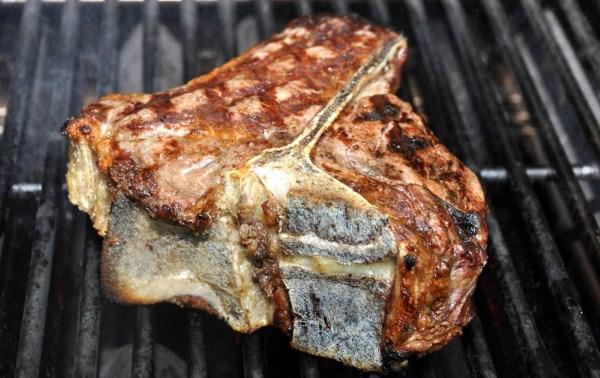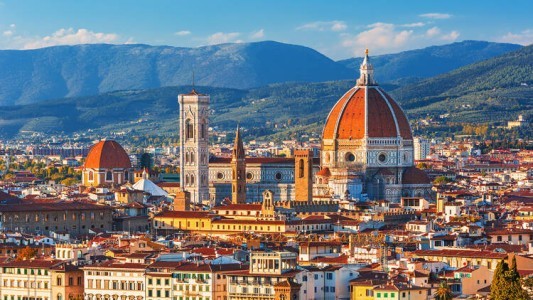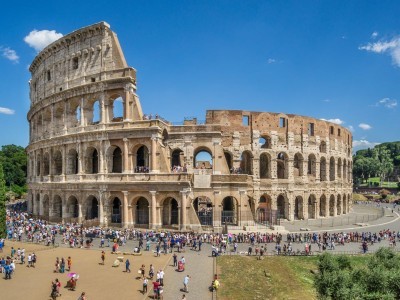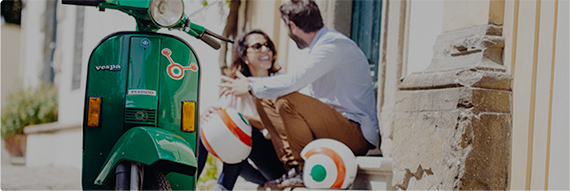Tuscan Food: Meat

Bistecca alla Fiorentina
The jewel in the crown of the carnivorous Florentine menu is without doubt the Florentine beefsteak. This T-bone steak traditionally comes from the prized, white Tuscan Chianina cattle which has a particular tenderness and depth of flavour. Some restaurants also use Limousine or Maremmana breeds of cattle in place of the Chianina. There are two steaks divided by the T-shaped bone known as the striploin and tenderloin in America and the sirloin and fillet in Britain and the Commonwealth. As these steaks require little cooking to make them sufficiently tender to eat, they are always cut thick, always served rare and due to their size they are usually shared between two or more people.
In restaurants the Bistecca Fiorentina is usually sold by weight (the price given is either by the kilo or etto, hundred grammes), cut when ordered, weighed, and often presented uncooked to the diners for their approval.
In most places, even if you ask for your steak to be cooked more than usual, it will be served rare, which is considered the bistecca at its best. If you prefer a steak well done, you should probably pass on the bistecca and go for a hearty stew such as Peposo instead!
Lamb
Lamb is not a popular meat in Tuscany, but you can find it on trattoria menus here and there. Sheep in Tuscany are farmed mainly for the production of pecorino cheese (delicious sheeps milk cheese), so lambs are slaughtered at a much younger age than when they are farmed for meat. When lamb appears on a menu, it is usually as grilled chops, or a slow cooked stew, and they tend to be disappointingly small. It is also a seasonal dish, usually found in the spring time especially around Easter.
Cinghiale
Dark brown wild boar weighing up to 190 kilos are found foraging throughout Tuscany, causing havoc to vineyards and eating valuable chestnuts in the forests. From the beginning of November until the end of January hunting season is on for the young and old, both to control their numbers and to provide a fantastic meal for the table.
Recipes for wild boar range from antipasti in the form of prosciutto and other salumi to pasta dishes, notably the wide ribbons of pasta called pappardelle with a meat ragu made of the wild boar meat. A rich stew is made with pieces of boar in a red wine sauce as a main course called spezzatino and it is traditionally served with polenta, made from maize flour.
Tripe
Lampredotto is prepared from a cow's stomach which may sound unappetizing to many of us, but when it has been simmered correctly for hours it becomes tender, delicate and very tasty. A bread roll softened with the cooking liquid and a dash of salsa verde (parsley and garlic paste) or salsa piccante (olive oil and chili) completes this masterpiece of simple, honest, Florentine food. Try lampredotto at one of the street stalls dotted around town or in the central market at Da Nerbone.
Trippa alla Fiorentina disguises the appearance but not the subtle taste and comforting texture of this delicacy. The strips of tripe are simmered in tomatoes with garlic and herbs then the finished dish is served steaming hot with grated Parmesan cheese and a good piece of crusty bread to soak up the sauce. Trippa alla Fiorentina is widely available on menus throughout Florence.
In the summer months a tripe salad is eaten cold with olive oil garlic and parsley. Minced lampredotto makes a delicious alternative to the classic meat sauce for pasta and for those unsure about trying lampredotto this can make an easy introduction.
Pork
The ubiquitous pig does not only appear on the Florentine table as prosciutto and salami, a popular main course is a grilled pork chop, the bistecca di miale, or roast pork, arista. A warming winter dish is made with the ankle joint of the pig, the stinco, roasted in the oven with rosemary and potatoes, while a summer barbecue would be incomplete without spare ribs and skewers of mixed pork meat.







